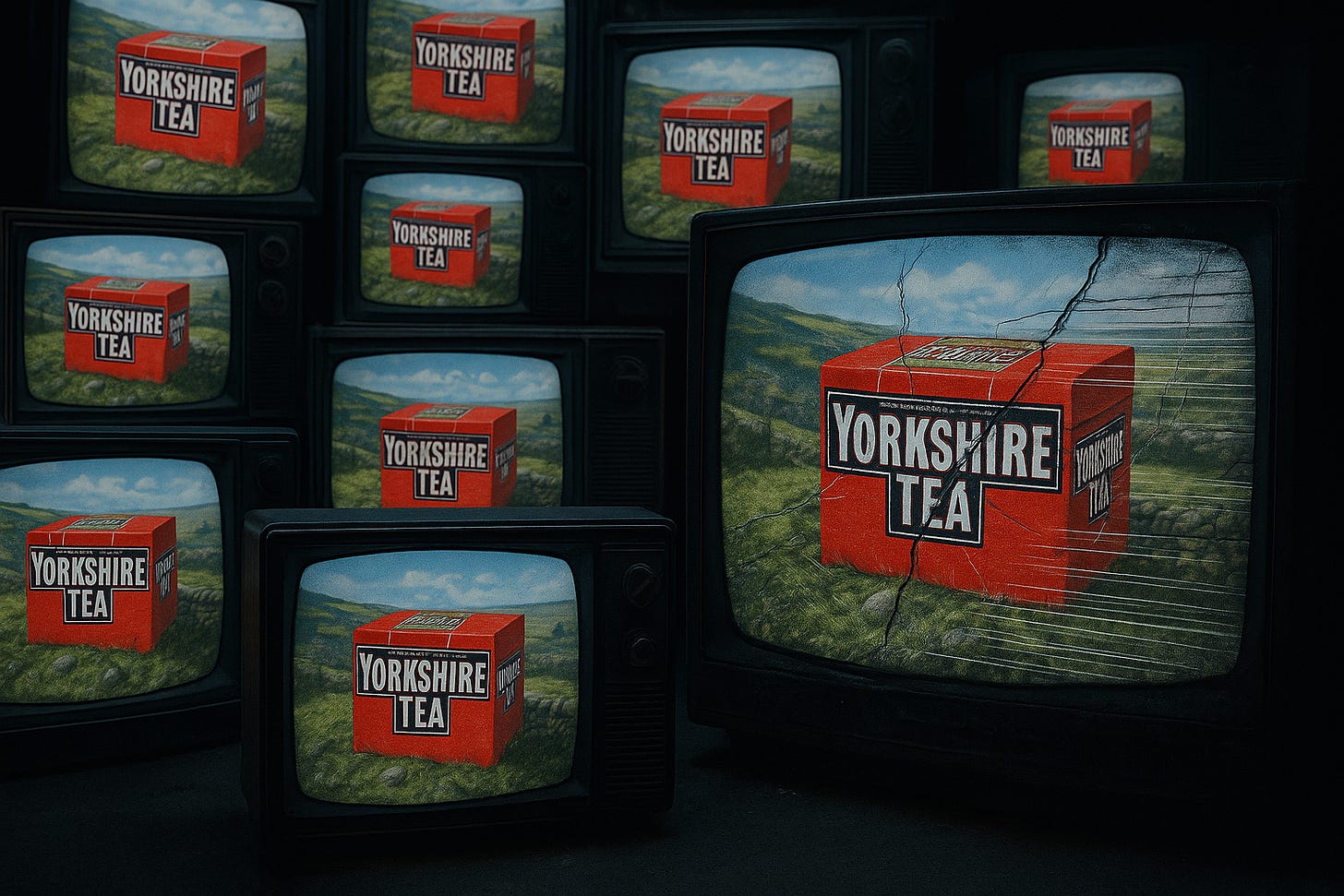One of the more tedious spectacles in our trade is the rediscovery of the obvious, the repackaging of platitudes as if they were profound insights. Like a dog discovering its tail and mistaking it for a revelation. The latest object of this tiresome enlightenment? “Creative consistency”.
What began as a necessary critique of creating too many ads without investing in the media to properly distribute them has become a chorus of lazy agreement. From the conference stages of Cannes to the echo chambers of LinkedIn, the same tired dogma echoes: keep the same agency, repeat the same distinctive assets, and your brand will flourish.
In a world as messy and complex as marketing, is that ever truly an answer or just a pithy talk title? Creative consistency isn’t a cure-all. It’s a convenient fiction that papers over the harder questions. What exactly are we repeating? And why should anyone care?
Effective creative consistency is an output of good marketing.
Tea Done Proper
Case in point: Compound Creativity, the System1 and IPA research that has become a headline in this narrative. The research is thorough, and the IPA’s presence gives it weight. The data is compelling: brands that consistently use distinctive assets—like characters, jingles, or tones—perform better in the market. In their language, these “creative codes” strengthen mental availability.
Yet for all its rigour, the research risks being misread as a magic spell: just keep the codes the same and success will follow. Celebrate for here is this year’s Advertising Field of Dreams.
Which brings me to Yorkshire Tea’s triumph over the past seven years and their recent announcement: profits doubled, a billion extra tea bags sold. Proof, some might argue, that creative consistency is king. But to treat Yorkshire Tea’s victory as a simple matter of repeating codes is to miss the real lesson—those codes worked because they were built on something real.
Yorkshire Tea didn’t deploy Michael Parkinson and a northern tone merely for consistency. They did it because “doing things proper” was a truth that ran through the business, from brewing to brand. The consistency was disciplined, more importantly, it was anchored in clarity about what the brand stood for.
This is the catch-22 at the heart of creative consistency: those codes only work if they’re built on a brand idea that is itself robust. Compound Creativity measures the echo of ads, not the soul of a brand. If the brand’s idea is hollow, those codes will only amplify the emptiness. Repetition alone exposes weakness faster than it masks it.
That’s the real test of creative consistency: it’s not about how often you repeat yourself it’s about whether your brand would “recognise its own soul in the dark”, without the bright lights of campaign budgets and conference applause. Yorkshire Tea’s story wasn’t just about repetition; it was about repeating an idea that was rooted, relevant, and real.
Yorkshire Tea avoided the trap of hollow repetition because they understood themselves first. Their IPA Effectiveness Award wasn’t won by clinging to the same codes out of habit or fear. It was won by building a brand idea strong enough to support that consistency in the first place. Creative codes are the surface. Brand discipline is the bedrock.
Beyond the Dopamine Hits
Much is made of the low attention world we all live in. In practice, we’re contending with a cacophony of channels, devices, and content engineered to capture fleeting focus at every swipe, scroll, and skip. The result? A marketing environment more like a pinball machine than a carefully curated test tube.
This isn’t merely a poetic metaphor. Around 20% of the population are neurodiverse, and for those of us with ADHD or similar conditions, attention is a different currency altogether. It doesn’t work in the neat averages that research adores. It fluctuates, it spikes, it flickers and it’s not just about time spent, but about the quality of engagement.
In this environment, creative and brand consistency can help. They offer a visual and tonal landmark that can guide people back to your brand again and again. But let’s not fool ourselves: that alone isn’t enough. Advertising isn’t delivered in a lab. It’s delivered into the messy, unpredictable human world. And in that world, attention is elastic, distracted, sometimes delighted, often divided and it’s never as straightforward as the tidy graphs of ad recall and brand lift might suggest.
This is why the real work begins beyond repetition. It starts with understanding how your brand lives in people’s lives and why it matters at all. Because in the end, consistency isn’t about what you say. It’s about what people feel, what they remember, and how they connect, even when they’re only half paying attention.
Put the Kettle On
Let’s dispense with the lazy prescription that creative consistency is a shortcut to success. It’s not a magic metric or a silver bullet, it’s an important element of success, but never the whole answer. The real question is whether you have something worth repeating. If the answer is no, creative consistency will reveal the fraud. If the answer is yes, then consistency isn’t a tactic it’s an obligation.
Yorkshire Tea’s victory isn’t proof that consistency alone works. It’s proof that when you do the hard work first, when you define what “proper” means to you, consistency becomes powerful. Without that discipline, creative consistency is just another shiny toy, another oversimplification that the industry grabs onto when the next research paper lands.
So the next time the chorus of “just be consistent” swells, pause to ask: what would your brand reveal if the lights went out? If you can answer that, if you can know your soul in the dark, then consistency becomes the amplifier of something real. If not, it’s time to brew a stronger idea.





